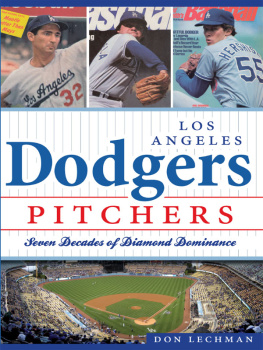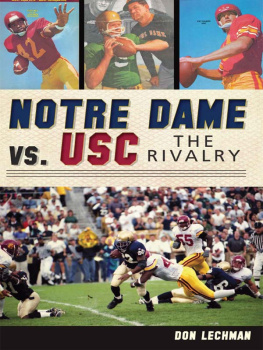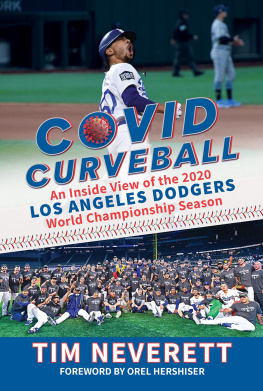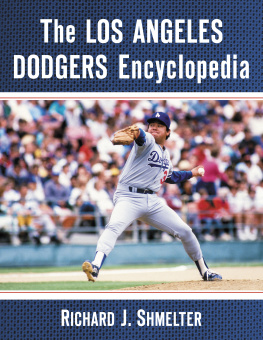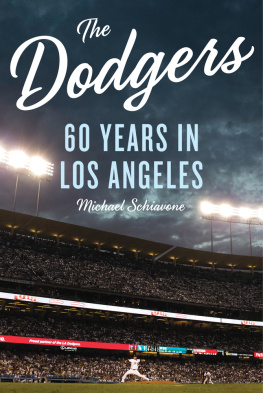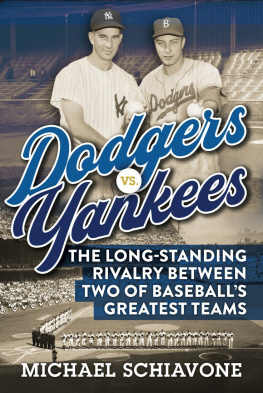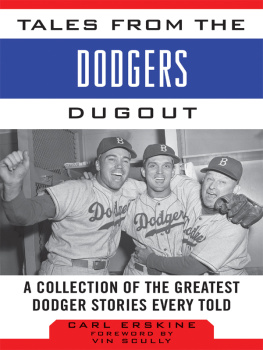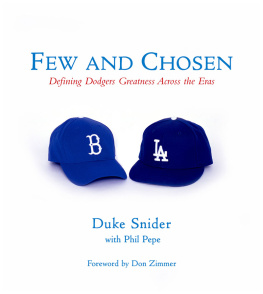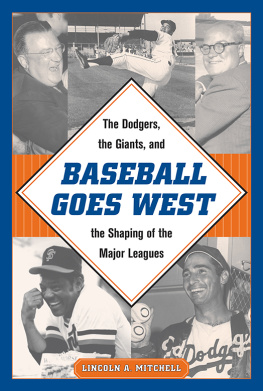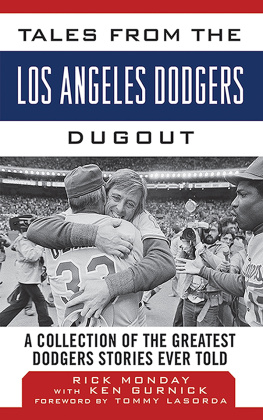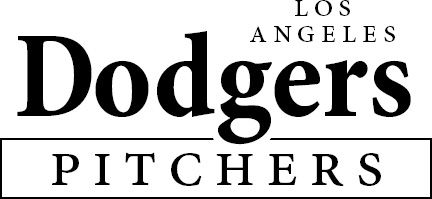

Published by The History Press
Charleston, SC 29403
www.historypress.net
Copyright 2012 by Don Lechman
All rights reserved
Cover images: Front: top three images courtesy of the Sporting News Archives; stadium image by Kwong Yee Cheng.
First published 2012
e-book edition 2012
ISBN 978.1.61423.628.3
print ISBN 978.1.60949.712.5
Library of Congress CIP data applied for.
Notice: The information in this book is true and complete to the best of our knowledge. It is offered without guarantee on the part of the author or The History Press. The author and The History Press disclaim all liability in connection with the use of this book.
All rights reserved. No part of this book may be reproduced or transmitted in any form whatsoever without prior written permission from the publisher except in the case of brief quotations embodied in critical articles and reviews.
This book is dedicated to my two grandchildren, Kevin Jonathan Rodriguez and River Isabella Rodriguez, who light up my life.
Contents
Acknowledgements
My first tribute goes to my friend and editor Jerry Roberts of The History Press. His overseeing, assistance and dedication to this project made the book possible. I also want to thank my wife, Patricia Dee, who has put up with my endless hours of writing and cursing statistics and visiting baseball parks across the land, as well as my sporting obsessions, including baseball, my longtime love and affliction.
Thanks also go to Mark Langill, official historian of the Los Angeles Dodgers; Ian Allen of South Bay Baseball Cards Inc.; Michael Bernstein of Upper Deck; artist James Zar of San Pedro, California; Shawn Schrager of the Sporting News Archive in Charlotte, North Carolina; and Panini America, USA in Houston, Texas.
Also, this fan appreciates the contributions of one Vincent Edward Scully, longtime Dodger broadcaster, to the success of the Dodger pitching staff, as well as his being a great linchpin in my allegiance all of these years to the Dodgers. Scully is held in high regard by the Dodger faithful and practically everyone else: In 2009, he was named the best sportscaster of all time by the National Sportswriters and Sportscasters Association. If Vin said great things about any pitcher, they obviously were true. And he has said plenty. Vin, of course, started announcing the L.A. Dodger games after coming west with the team from Brooklyn.
He doesnt just seem like one of the familyhe is family. His voice is soothing, unpretentious and undemanding but at the same time vibrant and full of life, in the house, the car, the stadium or wherever you may be. His knowledge and nuances enlighten and entertain the listener. Nobody tells stories better than Scully, and nobody could possibly have more. Every inning of every game, he has something funny, dramatic or human to tell. His fairness is legendary. He calls the game the way he sees it and always lets the listener know where the home and the away players stand. He does not hesitate to reveal the faux pas by his own team. Heres one of his most famous calls, about that most famous Los Angeles Dodger pitchers most famous game:
One and one to Harvey Kuenn. Now hes ready. Fastball, high, ball two. You cant blame a man for pushing just a little bit now. Sandy backs off, mops his forehead, runs his left index finger along his forehead, dries it off on his left pants leg. All the while Kuenn is just waiting. Now Sandy looks in. Into his windup and the two-one pitch to Kuenn: Swung on and missed, strike two. It is 9:46 p.m.
Two and two to Harvey Kuenn, one strike away. Sandy into his windup, heres the pitch:
Swung on and missed: A perfect game! [Thirty-eight seconds of cheering by the crowd.]
On the scoreboard in right field it is 9:46 p.m. in the City of the Angels, Los Angeles, California. And a crowd of 29,139 just sitting in to see the only pitcher in baseball history to hurl four no-hit, no-run games. He has done it four straight years, and now he caps it: On his fourth no-hitter he made it a perfect game. And Sandy Koufax, whose name will always remind you of strikeouts, did it with a flurry. He struck out the last six consecutive batters. So when he wrote his name in capital letters in the record books, that K stands out even more than the O-U-F-A-X.
Thats vintage Scully, Los Angeless national institution. Nobody could pitch a line like him.
Introduction
A good pitcher is worth a dozen right fielders, unless one of them is Babe Ruth, Hank Aaron or Roberto Clemente. Pitching a baseball is an art, requiring mind, body and spirit. Stepping onto the pitchers mound demands mettle and poise. Hanging in there inning after inning requires sheer guts. Dominating a game from the rubber time after time, year after year, requires a special kind of force of nature. As an athletic feat repeated dozens and dozens of times per game, pitching is ostensibly and hopefully honed toward perfection. And that is the elusive illusion: perfection will never be achieved.
To be perfect, one pitcher would have to strike out twenty-seven batters on eighty-one pitches. In golf, one would have to shoot an eighteen on an eighteen-hole course. In basketball, a player would need to make every basket and free throw, grab every rebound and prevent the other man from scoring. Sporting perfection is as elusive as any brand of perfection. Pitchers never stop trying to achieve perfection, and some of them have come close. The highest marks on a consistent, collective, team-wise basis have been achieved by one group of throwers over all others: the Los Angeles Dodgers.
Good pitchers have been held in very high regard by nearly everyone, with exceptions like Boston Red Sox Hall of Fame slugger Ted Williams, who thought they were the dumbest guys to walk the face of the earth. What he really meant is that he did not have any respect for someone who was not as well prepared to pitch as he was to hit.
Not very many Dodgers hurlers have approached pitching perfection. But some have thrown no-hitters, many of them have pitched valiantly in late innings and few were truly remarkable down the stretch, taking the club into the playoffs. And they have come closer than any other franchises collective pitching staff to dominance of the sport. This book isolates the Dodgers pitchers, explains their individual contributions, particularly on the World Serieswinning teams of 1959, 1963, 1965, 1981 and 1988, the other World Seriesparticipating clubs of 1966, 1974, 1977 and 1978 and the playoff contenders of 1983, 1985, 1995, 1996, 2004, 2006, 2008 and 2009.
No team except the New York Yankees has made as many playoff appearances since 1958 as the Los Angeles Dodgers. No team made it so far toward the ultimate World Series goal so many times by leaning on their pitching. The Dodgers have had more winners, nine, of the Cy Young Awardconferred annually on the leagues best pitcherthan any other franchise: the overpowering Don Drysdale in 1962; great protean southpaw Sandy Koufax in 1963, 1965 and 1966; brilliant reliever Mike Marshall in 1974; Mexican-born phenom Fernando Valenzuela in 1981; breakthrough star Orel Hershiser in 1988; BB-throwing closer Eric Gagne in 2003; and new kid on the mound, Clayton Kershaw, in 2011. (Don Newcombe was also named winner of the Cy Young Award in 1956for the Brooklyn Dodgers.)
In perhaps the most stunning statistic in the fifty-three years that the Dodgers have reigned in Los Angeles, the club has led the National League in team earned run average twenty timesnearly two-fifths of the greater half-century from 1958 through 2011including half of the 1960s, most of the 1970s, four times in the 1980s and three times in the new century. No other team in major-league history comes close to posting such dominant hurling statistics.
Next page
